Upstox Originals
Unlocking India’s travel boom— One homestay room at a time
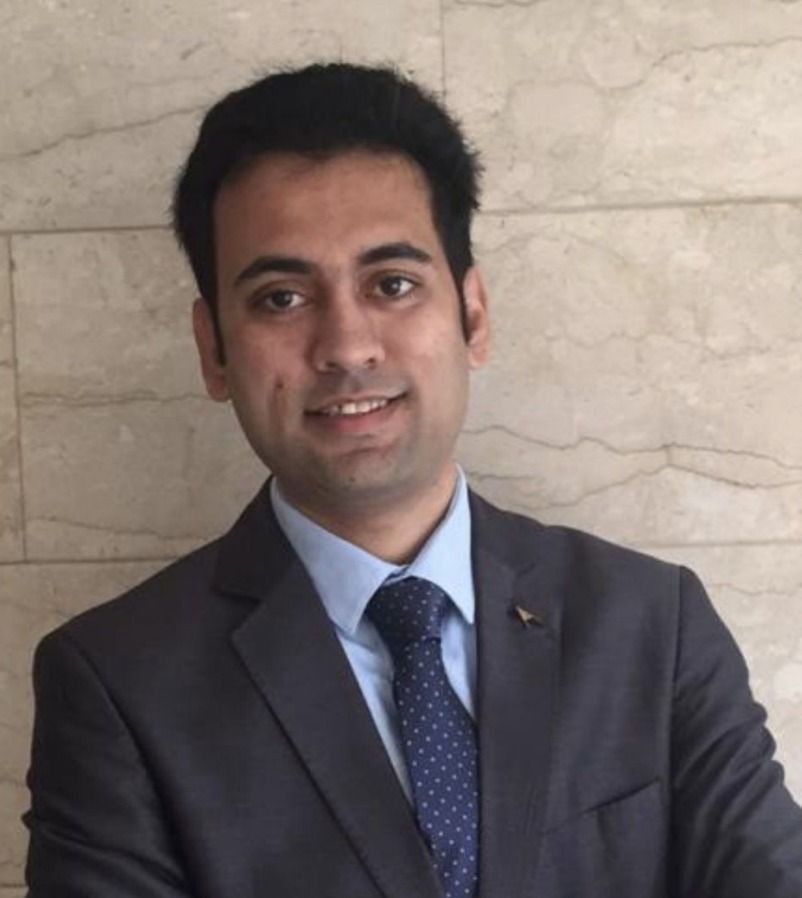
7 min read | Updated on November 06, 2025, 16:50 IST
SUMMARY
India’s ~₹4,700 crore homestay market is growing at 11% annually. MakeMyTrip has added 49,000 rooms in just one quarter. With Indians travelling more than ever, India does not necessarily need to build more hotels – it just needs to unlock rooms. With only 12% homestays formally registered, there is a huge scope for growth and formalisation in this market. This is not just about tourism—it’s grassroots economic revival, powered by spare rooms and smart tech.
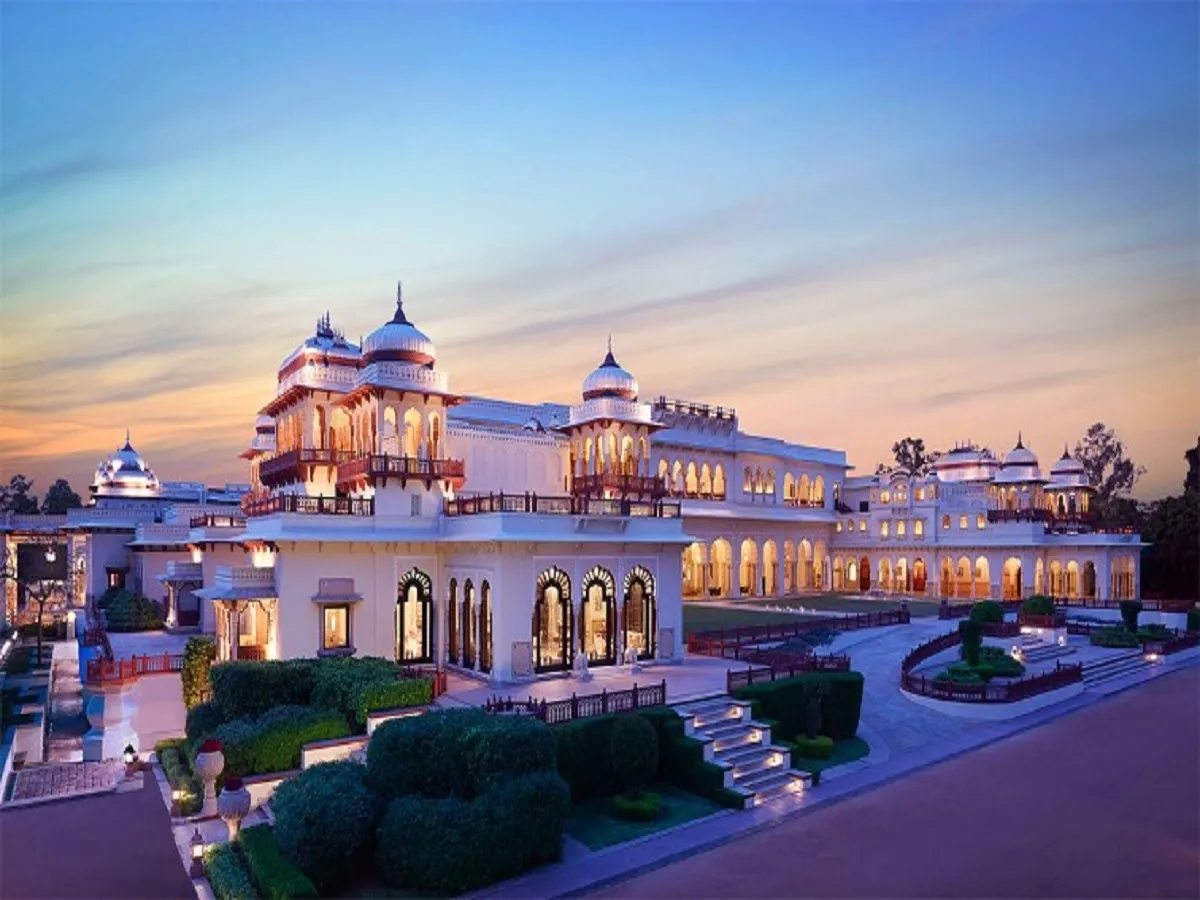
India has around 2.6 lakh active homestays, but only 12% are formally registered.
What if the next big travel opportunity in India isn’t built, but simply unlocked? According to the Ministry of Tourism, the country needs over 2 lakh additional hotel rooms to meet rising demand. That’s a massive gap for a nation that simply can’t stop travelling.
Now, building new hotels sounds like the obvious fix. But it also means crores in investment, endless rounds of clearances, and years before you can even hang that shiny “Now Open” sign.
Enter homestays - the low cost, high speed alternative. They dont need new land or heavy funding. Just an empty room, a willing host, and a good Wi-Fi connection.
And it’s working. From hill stations to hidden villages, thousands of homes are quietly becoming India’s newest stay options. The homestay market, already worth ₹4,722 crore in 2024, is growing at about 11% a year, as travellers look beyond hotels and towards homes with stories.
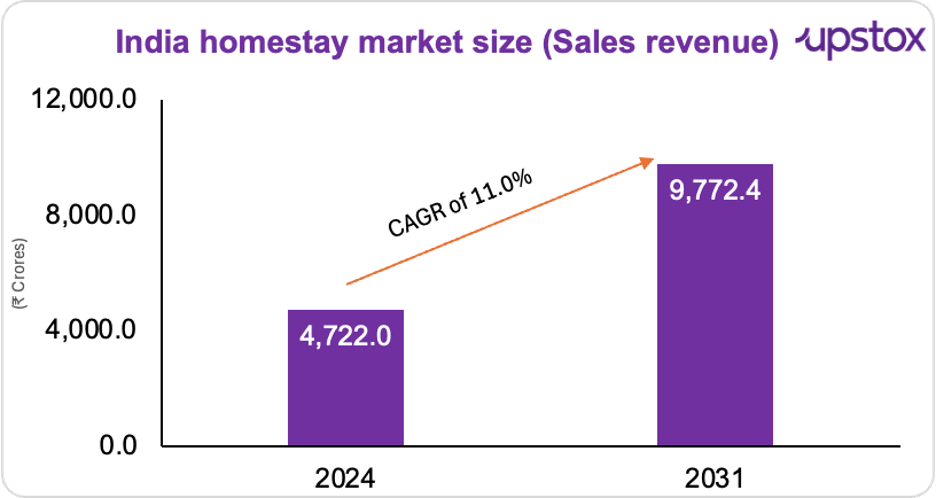
Source: IMAARC Group
But here’s the catch. India already has around 2.6 lakh active homestays, but only 12% are formally registered. So, what’s the encouraging part? NITI Aayog has rolled out a new blueprint that could finally bring order to the chaos.
See, every state currently plays by its own rulebook, Uttarakhand issues certificates valid for two years, Kerala and Uttar Pradesh offer three, while Goa stretches anywhere between one and five years, depending on the operator.
But the Aayog’s plan wants to fix that. It aims to make registrations faster, uniform, and transparent, so India’s next wave of small town entrepreneurs can focus less on red tape and more on welcoming travellers.
And here’s the bigger picture, domestic travel is booming.
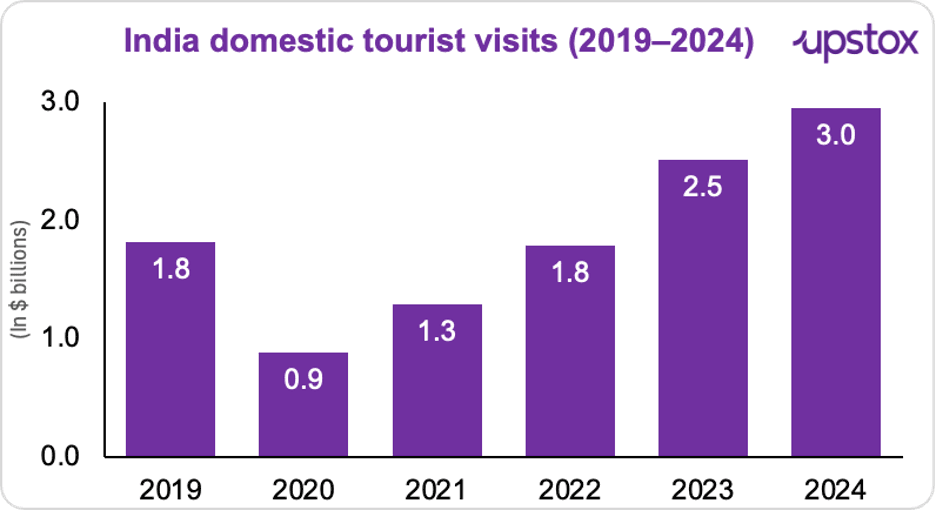
Source: Ministry of Tourism
And that growth is already catching the eye of big travel players like Makemytrip.
MakeMyTrip’s homestay bet
The Nasdaq-listed company is quietly transforming how India books stays. In the last year, MakeMyTrip has expanded its homestay portfolio to over 1 lakh rooms, adding 49,000 new rooms in Q2 FY25 alone, a 35% year-on-year jump.
Homestays now contribute 10% of all hotel room nights sold on the platform, showing how travellers are shifting from cookie-cutter hotels to more authentic, experience-driven stays.
Pilgrimage cities like Ayodhya, Varanasi, and Tirupati are leading the charge - homestay listings there have doubled in just one year.
Some concrete moves are visible:
-
Product innovation: MMT has rolled out homestay-centric discovery and content (stories, host profiles, experience bundles), aiming to convert browsing to booking with contextual storytelling. Their homestay landing pages and editorial content are designed to surface local narratives, exactly what experiential travellers seek.
-
Tech investment: MMT has introduced AI-driven search and semantic discovery for hotels and homestays, allowing travellers to type natural language requests (e.g., “quiet homestay with fireplace and homemade breakfast near Shimla”) and get curated results. That’s a direct UX enabler for homestay discovery and conversion.
-
AI-powered “Collections” engine improves visibility and pricing for 86,000+ listings. It has also launched a new AI-powered feature to simplify hotel and homestay bookings near 100+ national parks in India. The platform has mapped 2,000+ hotels/homestays to their nearest national park zones.
-
But MMT’s latest numbers tell a mixed story. According to its Q2 FY2026 filings, the NASDAQ-listed firm reported a net loss of $5.7 million, reversing its profits from the previous quarter.
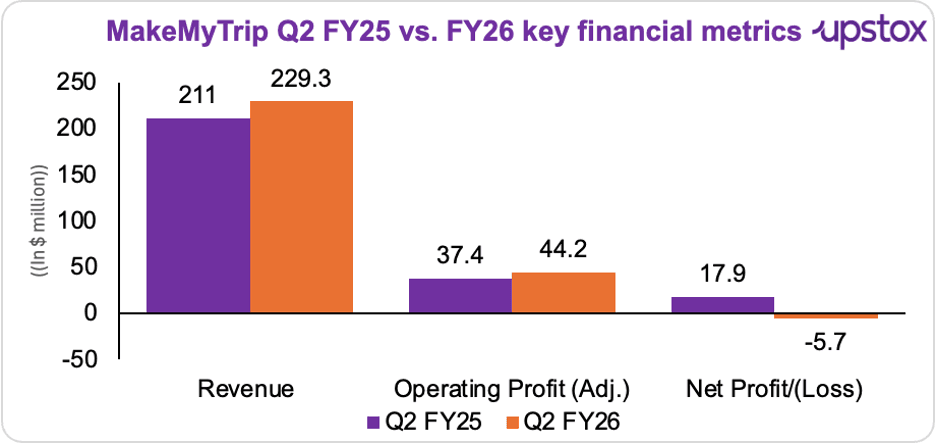
Source: Investing.com
And maybe, that’s where homestays could play savior. Unlike traditional hotels, homestays don’t carry high acquisition costs or commission wars. How? Let us understand this ahead.
Business economics & why this can move the needle
The supply crunch
As stated above, India currently faces a 200,000-room shortfall in formal accommodations. And, 75% of this deficit is in Tier-2 and Tier-3 towns. Organised hotels cluster in top 10 cities, leaving smaller markets under-served. This gap is the perfect entry point for homestays - flexible, asset light, and scalable.
| City Tier | Rooms Available (‘000) | Estimated Demand (‘000) | Gap (‘000) |
|---|---|---|---|
| Tier-1 | 130 | 150 | 20 |
| Tier-2 | 70 | 150 | 80 |
| Tier-3 & Rural | 40 | 140 | 100 |
| Total | 240 | 440 | 200 |
Source: NITI Aayog
Contribution to GDP
According to NITI Aayog’s Rethinking Homestays report (Aug 2025): If even half of the homestays are formalised, the sector could add ₹25,000 crore annually to local GDP.
Homestays contribute directly to inclusive rural employment and sustainable tourism, keeping money within local economies.
Higher margins
Hotels on MMT offer 12–14% commission, but marketing costs eat up half the margin. Homestays, on the other hand, earn 18–20% commission, with almost zero acquisition cost.
| Segment | Avg. Commission | Marketing Cost | Liability |
|---|---|---|---|
| Hotels | 12–14% | High | High |
| Homestays | 18–20% | Low | Minimal |
Source: Company, news articles
If MakeMyTrip can shift even 25% of its accommodation mix to homestays, analysts estimate a 4–5% bump in EBITDA margins. That’s not small, that’s revival.
The rise of the “Next 100 Cities”
When India began travelling again after COVID, something unexpected happened. Families that once flew to Singapore started road-tripping to Coorg, Bhuj, and Hampi. In 2023, Tier-2 and Tier-3 cities drove over 60% of the trips, India’s next travel wave isn’t coming from metros, it’s coming from small towns. That’s where homestays can step in.
They can turn idle homes into income streams, bring jobs to local communities, and redirect tourism spending into small-town economies.
Economic Multiplier
Now here’s something most people miss, homestays don’t just fill guest rooms, they fill job charts. According to the Tourism Satellite Account of India, the homestay sector has an employment multiplier of 4.38 and an output multiplier of 2.04, the highest among all tourism sub-sectors.
In simple terms, every ₹1 earned here can create over four new jobs and double the economic output. The ripple spreads beyond travel - boosting trade, processed foods, and most importantly, agriculture.
In fact, every unit increase in the homestay sector’s output leads to a 0.42-unit rise in agricultural products. Turns out, when homestays grow, so do farms.
Looking ahead
A new wave of homestays could change how India travels. As more homes open their doors to guests, small towns are discovering something bigger than tourism - new jobs, steady incomes, and a reason to stay rooted.
And the best part? Domestic visitor spending is set to surge, from ₹14.6 trillion in 2023 to nearly ₹33.9 trillion by 2033. That’s a lot of travel money flowing into local economies. In fact, homestays could lift rural incomes too. The IAMAI report states that - homestays are fast becoming a vital rural lifeline, with 23% of hosts calling it their primary income source and another 58% treating it as a steady side hustle.
And the tech tailwind is only making this fly faster.
AI-powered pricing is already helping hosts earn 12% more while keeping their rooms occupied 10% longer.
Digital onboarding now gets a new property listed in under 48 hours - what once took weeks.
So maybe the question isn’t if homestays can fix India’s 200,000-room gap. Maybe it’s when they’ll become the backbone of India’s tourism economy. And with MakeMyTrip already placing its biggest bet on this segment, using AI, storytelling, and local partnerships to turn homes into destinations, the answer might be sooner than we think.
By signing up you agree to Upstox’s Terms & Conditions
About The Author
Next Story
